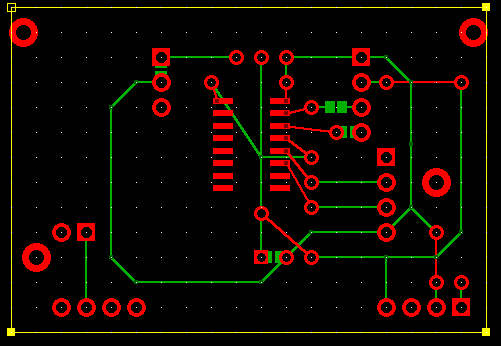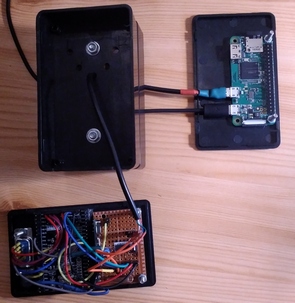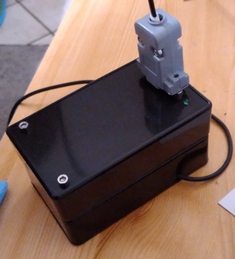Last update on 16/05/2020
Data Server on STM32
Introduction
The Data Server project is created to make some statisctics on internal temperature sensor (DHT22) and external temperature sensor (LaCrosse). The data from these sensors is sent to a Raspberry PI. The last one integrates a Python application which logs received data to a database. This application can also receive external commands by Telegram, for example, to update the site from the database data.
Modules
3V3
A component used to transform 5V into 3V3 is AMS1117-3.3.
DB9 Connector
| Pin | Name | Wire Color |
|---|---|---|
| 1 | 3V3 | Yellow / Ree |
| 2 | SWCLK | Yellow / Violet |
| 3 | SWDIO | Violet |
| 4 | DHT_DATA | Grey |
| 5 | BOOT0* | Blue |
| 6 | N.C. | - |
| 7 | N.C. | - |
| 8 | N.C. | - |
| 9 | GND | Black |
* BOOT0: 0 – FLASH, 1 – ISP
LED
The user LED is connected between 3V3 and the pin PA12 (output) via a 330 Ohm resistance. The used LED is a low cost one with working voltage about 1V9.
DHT22 Sensor
This sensor permits to measure the temperature and the relative humidity.
| Pin | Name |
|---|---|
| 1 | 3V3 |
| 2 | DATA |
| 3 | NC |
| 4 | GND |
It is recommended to pullup the DATA signal to 3V3 by 1k resistance. But it works also without this resistance.
The DATA signal is input/output. So, for the simplicity, it is connected to two STM32 pins: one as STM timer input (PA15) and another to STM32 output (PA8).
The timer is used to measure the pulse duration.
433 MHz Receiver
| Pin | Name |
|---|---|
| 1 | Antenna |
| 2 | GND |
| 3 | GND |
| 4 | 3V3 |
| 5 | 3V3 |
| 6 | DER* |
| 7 | DATA |
| 8 | GND |
* DER: 1) Data output-default; 2) Battery Saving Mode
The DATA signal is connected to STM32 input pin (PA2).
Raspberry PI Zero
The Raspberry PI Zero has two USB ports. One is connected to the +5V power. Another is connected to CH340C for UART communication. It is important to rely pins 4 and 5 of the second USB to enable the OTG mode.
STM32F100 Board
| Pin | I/O | Description |
|---|---|---|
| PA2 | Input | 433MHz receiver |
| PA8 | Output | DHT22 conversion start |
| PA12 | Output | LED |
| PA15 | Input | DHT22 data |
The code source can be found here: https://github.com/tuppi-ovh/data-server-stm32.
Connection Board

Source Code
Source code of this project:
Conclusion
The board has been working good since several months. All components can be replaced by more common ones: CH340C by FTDI, STM32F100 by another STM32 board.
I put everything in two identical plastic boxes:

At the end these plastic boxes were relied together:
